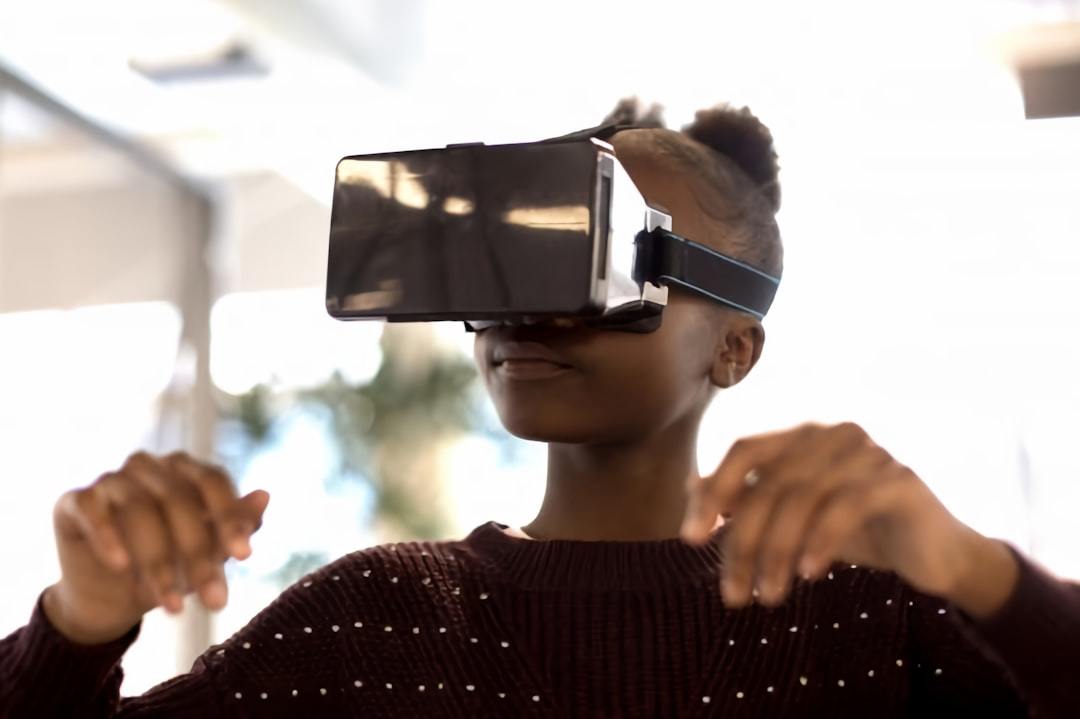The metaverse. It’s a word that’s been buzzing around the tech world and beyond for the past few years. Although, many find themselves scratching their heads, unsure of what it is. You hear people throwing around terms like VR headsets, virtual worlds, and even digital real estate, but what does it all mean? And most importantly, does the metaverse even matter for someone like you?
Table Of Contents:
Decoding the Metaverse
Okay, this is the part where people inevitably mention Snow Crash, the 1992 science fiction novel that first introduced the “metaverse” concept. While the vision of a completely immersive virtual world is still appealing, the current reality of the metaverse is quite different.
Right now, “the metaverse” is more like a jumbled collection of virtual experiences, from immersive gaming platforms to corporate meeting spaces and virtual concerts. This may involve a metaverse where people hang out with friends in “virtual homes” or one with VR meeting rooms that businesses might use to conduct meetings.
This has given rise to new, slightly more confusing terminology: “a metaverse” and the “multiverse of metaverses,” which basically refers to the bunch of “metaverse” platforms out there. But enough jargon. Think of the metaverse as a 3D version of the internet where, instead of just looking at a screen, you feel more immersed in the experience.
Although that idea is driving a lot of hype and investment, Meta itself lost $13.7 billion in 2022, later spending the first half of 2023 laying off over 10,000 employees. As history has taught us with Amazon’s delivery drones and Google Glass, money in a space does not always mean that there’s going to be a massive paradigm shift.
Why All the Metaverse Hype?
Okay, so if the metaverse isn’t some seamless, unified virtual world, why is everyone so hyped about it? There are a couple of factors at play.
First, you have gaming. Unsurprisingly, people connect gaming to the metaverse; it plays a significant role in the “proto-metaverse.” Think of popular games like Fortnite or platforms like Roblox. These have given millions a taste of social, immersive digital worlds – showing the possibility for virtual interaction beyond just playing games.
It’s like being part of a living, breathing community where everyone is constantly creating and experiencing new things. This has dramatically increased in-game spending, jumping from about $5 billion in 2015 to around $60 billion or $70 billion in 2021. This surge, driven partly by advances in technology (graphics processing, broadband, and more), signifies a change in the cultural perspective, a shift that’s starting to make the concept of virtual reality and property tangible.
Tech Advancements Are Closer to Reality
Then you have tech advancements in VR and AR that, while still flawed, are starting to provide better ways for humans to experience the digital world. Progress is being made from creating more realistic digital worlds (made possible by advancements like Unreal Engine 5) to video game companies like Epic Games working on digital asset distribution. It’s starting to look and feel like something out of those old science fiction stories.
One prime example is the progress in photogrammetry, the practice of creating digital 3D objects out of photos or videos. It’s revolutionizing digital art and creating opportunities for breathtaking virtual worlds. Of course, none of this negates the big money being pumped in by tech giants like Meta and Microsoft, who want to create the “next big thing” and maybe sell some digital items along the way.
With analysts projecting the metaverse to become an $800 billion market by 2024, these companies want to solidify their spots. Microsoft even paid a whopping $68.7 billion for Activision Blizzard in 2022 – demonstrating a significant bet on the future of immersive digital experiences. These investments have many speculating about the longevity of this technology.
So, is the Metaverse Just a Fad?
It is true; with so much “metaverse” buzz swirling around, many projects turn out to be broken game worlds that happen to have NFTs attached. Some see it as just another passing fad, especially given the shortcomings in current VR technology and some high-profile financial flops. Even a resurfaced video of Walmart’s 2017 VR shopping demo led to widespread confusion, illustrating the existing metaverse projects as being mostly hype.
Yet, with companies like Meta continually working on immersive virtual reality experiences and the emergence of augmented reality tools, things are evolving. Experts predict that the metaverse will play a substantial role in the lives of many individuals by 2030. This indicates a future in which millions of people experience the metaverse as an integrated aspect of their daily lives, blurring the boundaries between physical reality and the immersive possibilities of virtual experiences.
Bill Gates predicted in 2021 that meetings would move to 3D spaces with digital avatars in just a couple of years, and this may soon become the standard method of business interaction.
More Than Just VR
Sure, most people picture themselves putting on clunky VR headsets when they hear “metaverse,” but remember: this concept is still under development. There’s still so much that needs to be figured out.
For one, current VR technology has serious comfort issues. Despite its affordability, even the basic Oculus Quest 2 doesn’t resolve widespread issues such as motion sickness, which many people experience. Research has proven that women tend to experience far higher discomfort due to most VR headsets being designed for men’s physiology.
Beyond physical limitations, current “metaverse” tech suffers from design flaws that hinder its mass adoption. For example, while Apple’s AR-powered spatial computing platform and its new Meta Quest 3 headset show potential, a huge barrier is figuring out how to make AR devices comfortable and not weird-looking when worn in public.
While Meta has made huge strides in its developer tools and software for virtual experiences, it may be worth exploring less hardware-dependent “metaverse” solutions. Forget the bulky, complicated headset and create simple, universally accessible ways for people to bring a piece of their “metaverse” persona into their existing online life. One idea is an open digital avatar standard that can be used across platforms.
The Current State of the Metaverse
With global sales of VR headsets experiencing growth, companies are optimistic. The challenge lies in actual use – while VR sales may have surged in 2021, only around 28 percent of people use VR daily, despite owning one.
Part of this disconnect may stem from inherent design issues that companies aren’t currently addressing, as the existing VR systems prioritize fully immersive experiences over comfort and social integration.
Perhaps approaching this in an unconventional, hybrid manner is better than attempting to create a fully realized “metaverse”. This is similar to generative AI – in its attempts to provide greater utility than traditional methods of problem solving. From the more basic Google Cardboard (at around $10), to high-quality VR gaming systems, the current “metaverse” can look different based on your tech and budget.
FAQs About the Metaverse
How do I get into the metaverse?
You can “enter” the metaverse by joining virtual worlds through various devices such as VR headsets, smartphones, PCs, or gaming consoles. Depending on your choice, prices can range from affordable solutions like Google Cardboard to mid-tier options like an Oculus Quest 2 headset or even high-end devices like Valve Index VR. There’s also an array of digital “worlds”, from gaming platforms to corporate meeting spaces that can cater to various tastes and needs.
What does the term “metaverse” mean?
Think of the “metaverse” as an immersive evolution of today’s internet, incorporating aspects of digital technology like AR/VR, artificial intelligence, and even cryptocurrency to connect people in more immersive ways. This convergence is enabling various opportunities, from attending a metaverse concert or virtual meetings with 3D avatars to virtual shopping and even exploring augmented reality landscapes using AR-capable devices.
Are we living in a metaverse?
With time, though, as VR/AR and Internet technologies advance, a future where many everyday activities migrate to a more seamless virtual realm seems plausible.
Is the metaverse available yet?
A version of the metaverse already exists, but it’s not the utopian virtual world promised in sci-fi novels (yet). You can engage with immersive gaming experiences on platforms like Fortnite or Roblox, participate in virtual events or work using software like Microsoft Teams, and even try immersive experiences like metaverse travel offered by brands. As more industries join, offering training in the metaverse, the availability and adoption will continue to grow.
Conclusion
The metaverse is evolving in surprising and intriguing ways. As technologies like VR, AR, AI, and photogrammetry improve, they pave the way for an engaging future. But beyond fancy headsets and the tech hype, much must be worked out before a seamless “metaverse” materializes.
This leads companies to explore the concept beyond traditional entertainment and gaming, moving into more pragmatic applications for businesses and training for virtual worlds, healthcare (virtual reality therapy), education, and more.
Subscribe to my LEAN 360 newsletter to learn more about startup insights.





